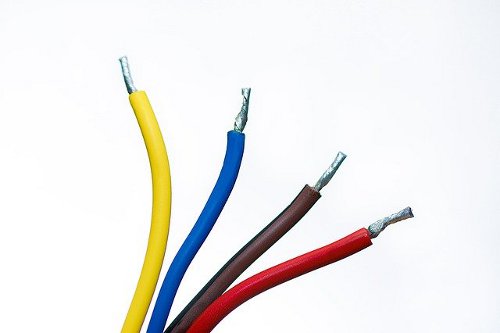Old and outdated wiring places your home or office at the risk of fires and other electrical hazards. Let safety be your priority. With regards to your electrical wiring, the proverb ‘A stitch in time saves nine’ holds true. Taking appropriate action now will help you avoid regrets later. Usually, people tend not to pay sufficient attention to the wiring in the house until it shows visible signs of wearing out, yet it is of utmost importance to always be alert and aware regarding it.


The neglect of wiring is not intentional at times. Lack of knowledge and understanding of this subject also leads to hazardous scenarios. The risk from old electrical wiring can be taken care of with some study. We have created a list of situations where you should look into changing the wiring of your abode.
Old structure
If your house, office, or building is more or less three decades old, it is time to do a thorough wiring inspection. What was suitable at that time may not be apt for the present time. All electrical gadgets have evolved, and practices are different today since the understanding of electricity has grown as well. We understand electricity more deeply now than when we first began to harness it. To stick to the old pattern may prove dangerous. Get your wiring updated according to the latest standards.
Regular tripping of circuit breaker
When your circuit breaker trips often, it tells you that the electrical system in your abode is buckling under too much load. The tripping of the circuit breaker is a protective measure against fires. It also puts off the power of the entire house, which can get annoying. This tripping may start or increase after you install a new significant appliance. However, regular repetition of tripping is a good indicator that you need to upgrade the wiring in the house. In this case, you will need to change the old wiring and replace it with some that have more electrical capacity.
A low number of electrical outlets
This is an issue that is common in older structures, while some new, ill-conceived ones struggle under it too. The smaller number of electrical outlets is not the real problem, but it is the cause. The real problem arises when we start using extension cords and connect too many gadgets to one outlet. If you overload the extension beyond its maximum current rating, you risk overheating the plug in the outlet. An electrical fire is a possibility in this scenario. If you find you have many electrical devices and a lower number of outlets, it is time to do some wiring renovations. The utmost dangerous situation is when you connect an extension lead to another extension lead. Avoid such a scenario and make sure you get a licensed electrician to do the installation of further outlets as soon as possible.
Two prong electrical outlets
These are also indicative of older wiring, as this system is now outdated. Modern homes have the latest outlet standard. Older structures will have two-pronged outlets. This type of outlet won’t be compatible with modern gadgets. The leading cause of concern in this type of outlet is the absence of ground wires or the encasing of ground wires. Ground wires play an essential role in protecting from short circuits, high voltage, and resultant hazards and injuries. We recommend upgrading your electrical outlets through a qualified electrician as a considerable amount of rewiring is involved in this process.
Burnt smell
This is a prominent cause of alarm and will alert most people. Do not procrastinate in getting your wiring inspected and changed if you start getting a burnt smell near any electrical outlet or connected device. Ignoring a persistent burning smell can open up your house to a risk of fire. The smell of hot plastic is also a cause of concern.
Scorch marks around an electrical outlet, visible sparks, weird sounds, burnt plugs, and such other danger signs might indicate a deeper underlying wiring issue. Make that call to the electrician that you have meant to make since you noticed these signs. These signs can indicate uncontrollable surges of power, and it is best to report these to an electrician as soon as possible.
Flickering lights
Think about horror movies and flickering lights in old structures. Lights that flicker when you turn on an appliance indicate wiring issues like corroded electrical wiring, loss of conductivity, frayed wiring, and lower than required electrical capacity. For the safety of your family, it is best to check and change the wiring in the case of persistent flickering lights. Take the help of a registered professional for a thorough inspection and rewiring.
Electrical shocks
Although the possibility of getting a life-threatening shock indoors is low, there are still chances of mild to medium shocks. Frequent shocks at different outlets hint towards loose wiring or faulty and damaged wires.


If any of the situations mentioned above are prevalent in your house, office, or any other building, do get a licensed/certified electrician to do a safety inspection. You can use a nema plug chart to understand the multitudes of plugs and configurations. Be vigilant about your wiring and protect your abode. You pay so much attention to the construction details of your house. It is imperative to be as meticulous about its preservation.









